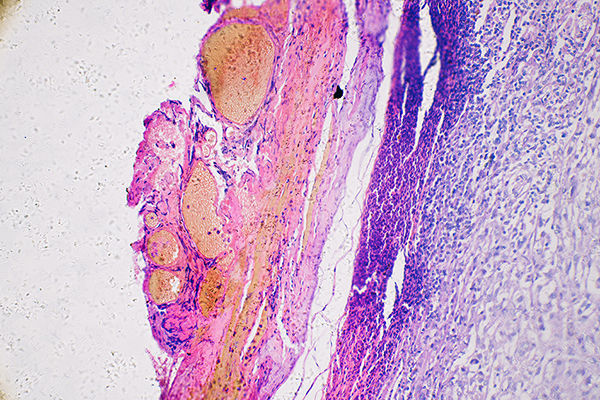Mohs surgery is a precise technique used to treat skin cancer. Your doctor removes a skin cancer by taking a thin layer around the visible tumor. Your doctor then checks this layer for any remaining cancer cells using a microscope. If remaining cancer is found, an additional layer is taken and continued until no more cancer is found.
This surgery is mostly used for areas of skin you can see such as the face and hands, or where scarring is a bigger concern such as the eyelids or genitals. It is also used on other areas of the body for large or aggressive skin cancers, or those in which a cancer was treated previously and has returned.
Call 260-266-7100 for information on scheduling an appointment.
Why is Mohs surgery for skin cancer done?
Mohs surgery is done to remove skin cancer while preserving as much healthy tissue as possible. It has the highest cure rate for most types of skin cancer and is the most effective technique in curing the two most common types of skin cancer: basal cell carcinoma and squamous cell carcinoma. Cure rates range as high as 99% with this technique.
Mohs surgery may be used for removal of skin cancer that:
- Is likely to return. Mohs surgery works well for getting cancer-free margins for cancers that have irregular borders and a history of removal and recurrence.
- Is located in visible areas or areas where skin tissue should be preserved, such as on the ears, nose or eyelids.
- Is growing quickly.
- Has a high risk of spreading to other parts of the body, such as in some squamous cell carcinomas.
- Occurs in children.
How is Mohs surgery for skin cancer done?
You will be awake during the surgery. Your doctor will inject a medicine to numb the area so you won't feel pain. When the skin is numb, your doctor will start to remove the cancer and a small amount of healthy tissue, one layer of skin at a time. Each layer of tissue is checked under a microscope soon after removal. If cancer is found, another layer is removed and checked. Layers are removed until no more cancer is found.
How well does Mohs surgery for skin cancer work?
Mohs surgery is a very effective treatment for skin cancer. This technique preserves as much nearby healthy skin as possible. It is recommended for basal cell carcinoma and squamous cell carcinoma when the highest cure rate is desired while sparing as much healthy tissue as possible.
What are the risks of Mohs surgery for skin cancer?
Risks of surgery include:
- Infection of the wound.
- Scarring.
- Discomfort or pain.
- Bleeding.
- Small chance the skin cancer could return.
What can you expect as you recover from Mohs surgery for skin cancer?
You will have a scar that fades with time. Wounds are generally closed in a straight-line fashion (‘linear closure’), by borrowing nearby lax skin (‘flap closure’), or occasionally left to heal on their own (‘secondary intent’). If your wound is large, your doctor may need to take a thin sheet of healthy skin from another part of your body (‘graft’). This sheet of skin can be used to cover the area where the cancer was removed. The doctor will try to use healthy skin from an area that is usually covered by clothes or is not easily seen.
Occasionally, you can return to your normal routine on the same day or the day after the surgery. But your doctor may ask you to limit activity until your follow-up appointment in 1 to 2 weeks. Some soreness, swelling, or bruising is normal.
Your doctor may recommend over-the-counter or prescription medicines to help with pain. Most wounds take 1 to 3 weeks to heal.
You may have stitches that will be removed in a week or two. If you have the type of stitches that dissolve, they don't have to be removed. They will disappear on their own. Your doctor will make the decision of which type of stitch to use based on the area of body worked on as well as type of repair required to fix the wound.


